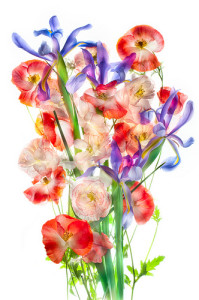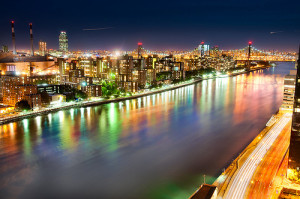I am very pleased to be able to show you a preview adapted from my new book, The Way of the Digital Photographer. In this story: a special pre-publication discount offer from the publisher; the Table of Contents; material from the introduction to The Way of the Digital Photographer.
This is a special offer on pre-orders of both the print and eBook versions of The Way of the Digital Photographer directly from the publisher, Peachpit. I have arranged this discount as a way to say thanks for your support and reading my blog. To receive the 30% discount from Peachpit, be sure to use the discount code PP-DAVIS30 (this code is case sensitive) after you add my book to your shopping cart when you proceed to check-out. Click here to order The Way of the Digital Photographer now!
Book description: In The Way of the Digital Photographer, master photographer and digital artist Harold Davis shows you how to make digital photography an art form. Great digital photographs need both camera and computer to be truly extraordinary. Using detailed examples and case studies from his own work, Davis provides myriad ideas you can use in your own work, and he shows you how to unlock your own creativity to make those special images you have always dreamed of! Readers discover how to effectively use post-processing techniques and gain insight as to how the techniques and steps involved can inform their choices when making a photo and in post-production workflow.
Pre-order your copy of The Way of the Digital Photographer: Walking the Photoshop post-production path to more creative photography!
Table of Contents
| Introduction 18 Digital Photography Is Painting 21 First things first 21 The camera to use 22 JPEG versus RAW 24 Photoshop prejudices 27 Seeing is about light 33 It all starts with a layer 38 Adjustment layers 43 Working with layer masks 44 Creating a layer stack 45 Combining two exposures with a Hide All layer mask 47 Using a Reveal All layer mask to combine two exposures 51 Using the Brush Tool 54 Selective sharpening 59 Working with gradients 60 Using the Gradient Tool to seamlessly blend two layers 67 Drawing directly on a layer 71 Introducing blending modes 73 Screen Blending Mode 80 Using Screen for selective lightening 83 Multiply Blending Mode 87 Blending mode categories 88 Testing the blending mode categories 91 Comparative blending 97 Workflow 102 Do it on your iPhone: Slow Shutter Cam 104 Multi-RAW and Hand-HDR Processing 107 Multi-RAW processing 108 Expanding tonal range with multi-RAW processing |
109 Getting the widest gamut with ProPhoto RGB 111 All roads lead to Photoshop: Smart objects and Lightroom 112 Adjusting exposure selectively 117 Hand-HDR 118 Shooting a bracketed sequence for hand-HDR 120 May the force be with your florals 125 Automated HDR 126 Automated HDR programs 134 Do it on your iPhone: PhotoForge 136 Enhancement to Glory 139 Workflow redux 140 Checkpoints 143 Tripping the light fantastic 144 Why be average? 145 Multiply and Screen blending modes 146 Sharpening and blurring 147 Glamour Glow and Tonal Contrast 148 A second helping of HDR 149 Pushing the boundaries: Pixel Bender 150 Some other painterly filters 155 Using LAB inversions 156 Understanding the LAB color model 167 Black and white 175 Backgrounds and textures 176 Blending a background with an image 178 Using textures to change the scene 184 Do it on your iPhone: Lo-Mob and Plastic Bullet 186 Resources 188 Notes 189 Glossary 190 Index |
Introduction
Your digital camera probably resembles a film camera in both appearance and basic functionality. Like a film camera, your digital camera has a lens with aperture and shutter controls that can be used to decide how much light penetrates into the body of the camera for each shot.
But that’s where the similarities between film and digital cameras end. Despite the similarity in appearance of the hardware device used to make the exposures, digital photography is an entirely new medium compared to film photography.
Historically, chemical properties of film and developing were used to record light that entered the camera. Today with a digital camera, the light is captured as a digital signal by a sensor. Digital signal data recorded by the sensor can be processed by the computer in your camera. More powerfully, and here’s where the fun really begins, image data saved by your camera can be processed on a standalone computer after you upload your files.
People don’t fully understand this new digital medium that consists of the camera-computer partnership. They’re still hooked on the fact that their hand-held computer with a lens (a.k.a. a digital single-lens-reflex, or DSLR) looks like
a good old-fashioned film camera—and if it looks like one, it must work like one. Not so. For those who get over this misunderstanding the door is wide open for experimentation and new approaches.
Digital is different. Very different.
One of the main goals of The Way of the Digital Photographer is to show you how to take advantage of this difference to enrich your own work.
…
In The Way of the Digital Photographer, you’ll discover how to effectively use several of the post-processing techniques that I use to create the final versions of my own imagery.
These techniques are presented as case studies in the context of actual examples, so you can understand what each step does. More important, I want you to gain insight into how the techniques and steps involved can inform your choices when you make a photo and in your post-production workflow. (For a discussion of workflow and to understand how best to adapt your workflow to the digital world, turn to page 107.)
…
Digital photography and post-production techniques that are used to inform one another—how you take a photograph with an idea or pre-visualization in mind, knowing what you can do to it later in post-production—are the basis of this new digital medium. If you can see a photograph in your mind’s eye before you take it and know how you can process it later to achieve your vision, then nothing can hold your imagery back. Truly, the sky’s the limit!
Technique without heart is banal and useless. I’ve found in the workshops I give that many people come to digital photography precisely because they enjoy—and are good at—working with technology. Indeed, perhaps these folks work in technology related industries.
But even if you are a technocrat it is important not to lose the creative aspects of digital photography. Often the people who start with digital photography because they are comfortable with the gear find some resistance to fully engaging their creative powers. They may be more comfortable with measuring pixels and navigating software than with conveying emotion.
If this describes you, be of good cheer. Provided that you approach image making in the spirit that anything is possible, you may be amazed by what you can achieve.
Along with the post-production case studies in The Way of the Digital Photographer, you will find thoughts and exercises, presented as Meditations. These Meditations will help you with the conceptual and emotional side of digital photography and also guide you in pre-visualizing your photographs with the idea of post-production in mind.
As you walk down the path of the digital photographer, you will find that photography is about your creative vision and your notions about art. Digital photography is also a way to show others your very personal view of the world. By combining your pre-visualization with your photography and appropriate post-production techniques, you can fully render anything you can imagine.
Please keep in mind the 30% pre-publication discount from the publisher for The Way of the Digital Photographer. Use discount code PP-DAVIS30 (case sensitive) at checkout to get your discount.


